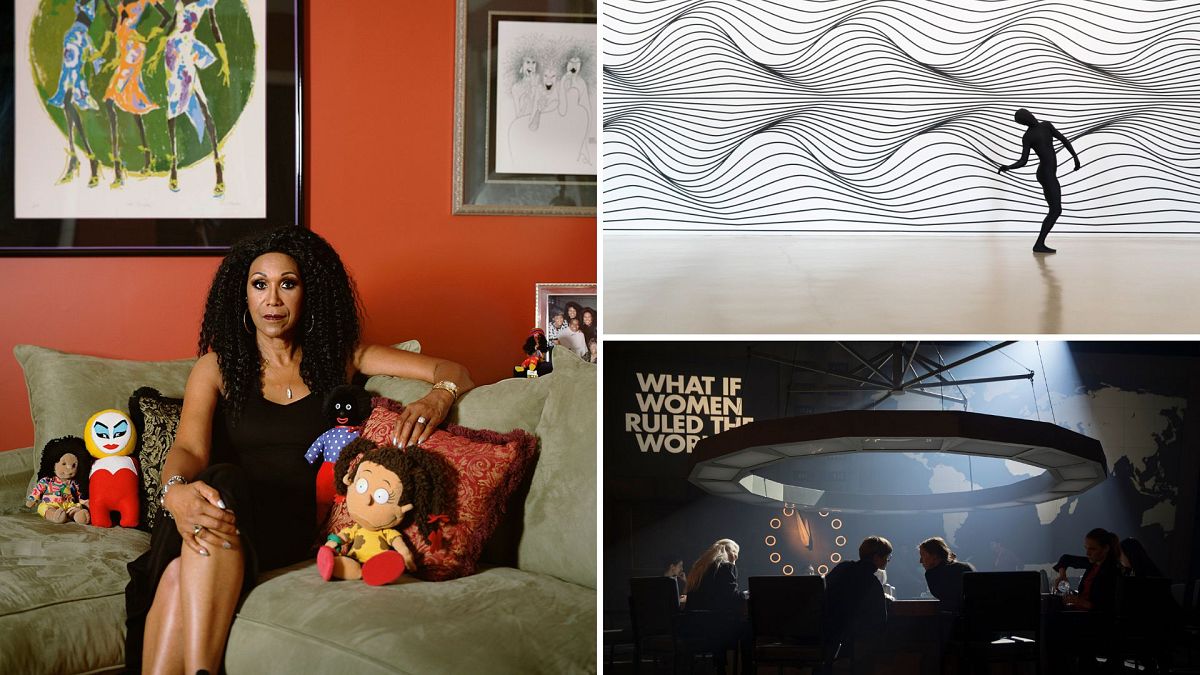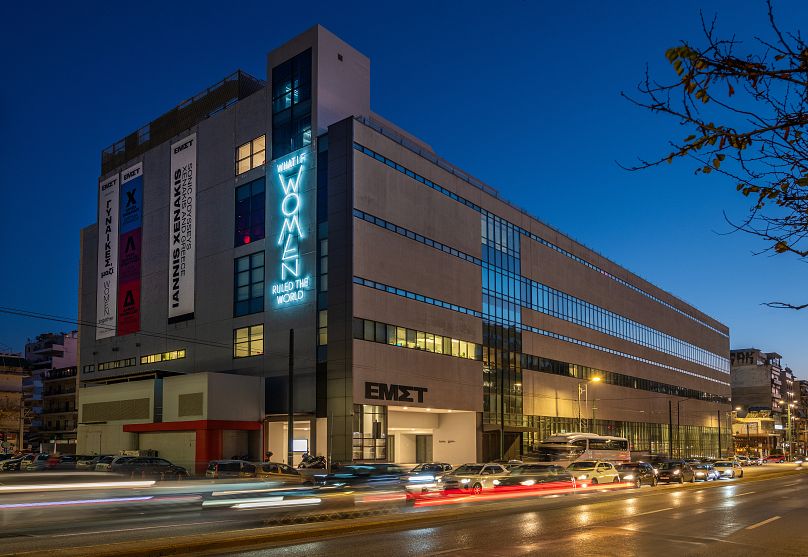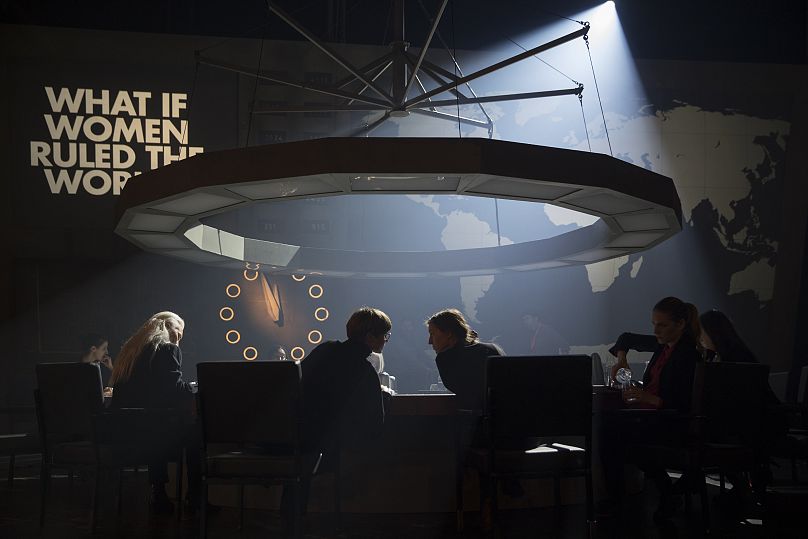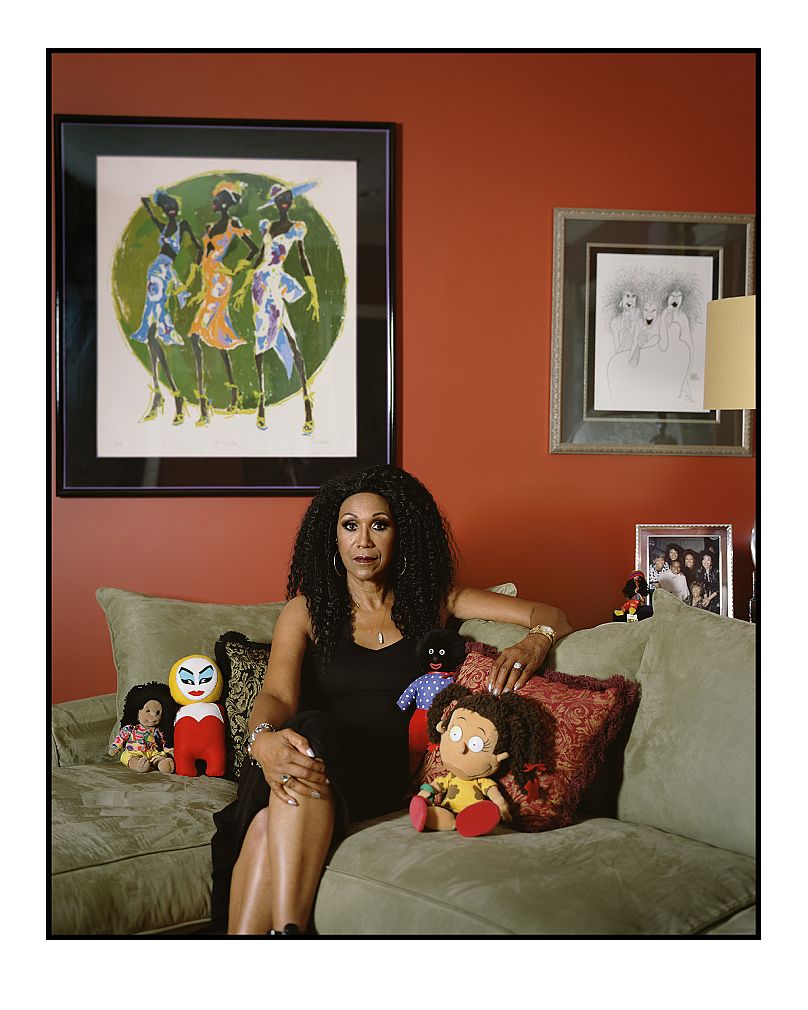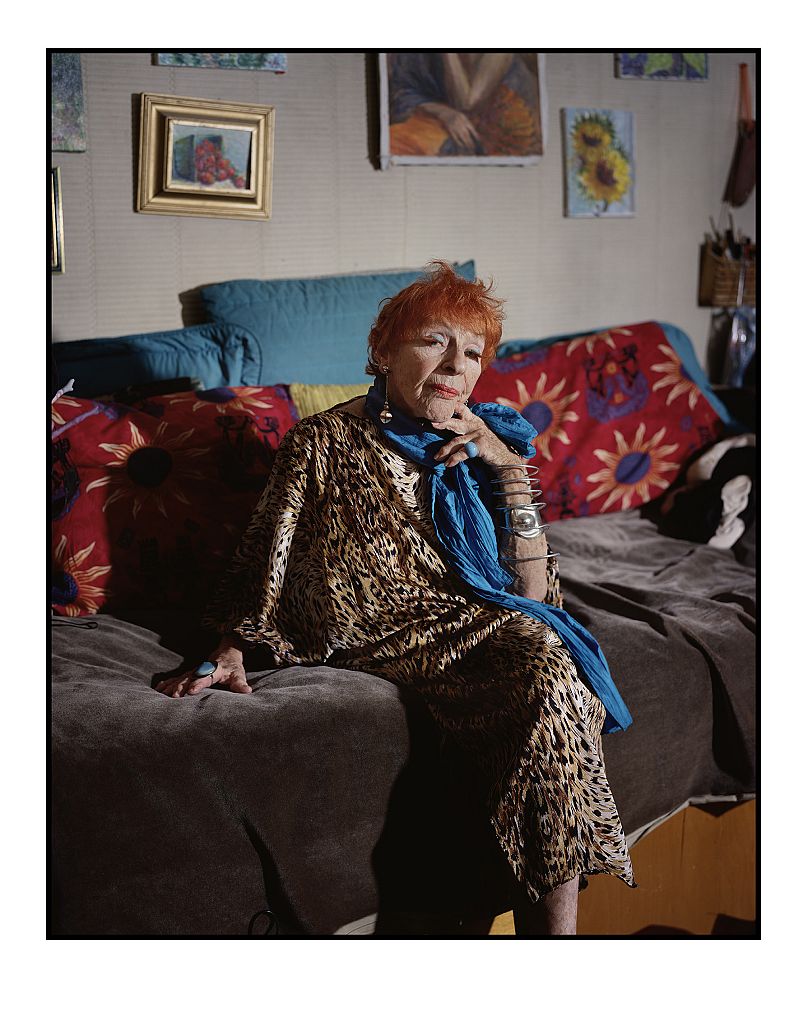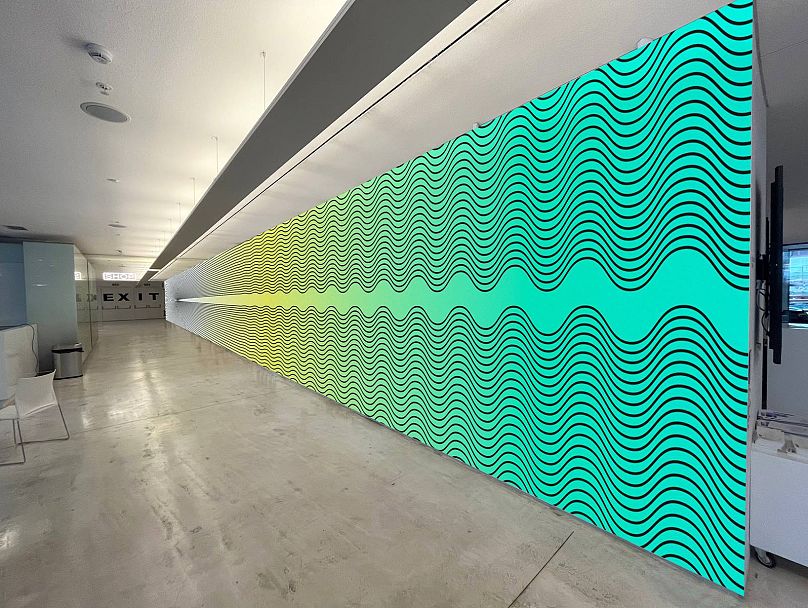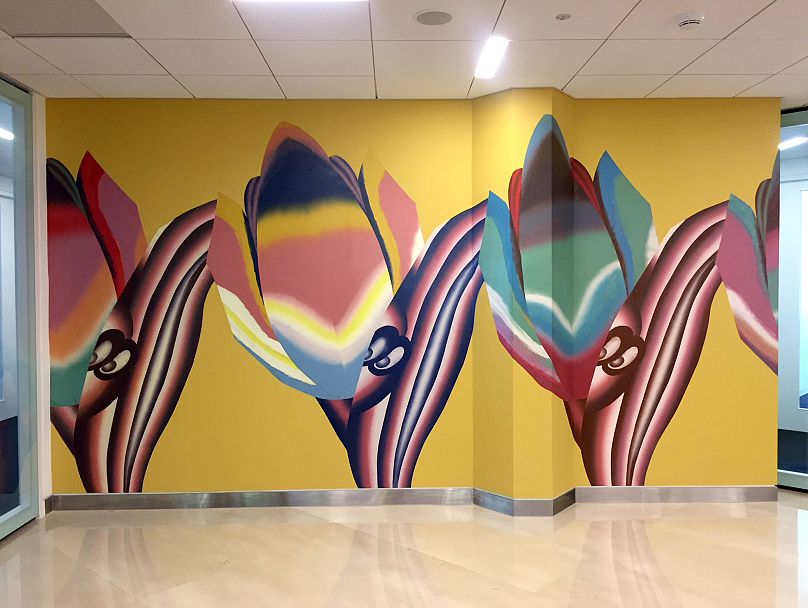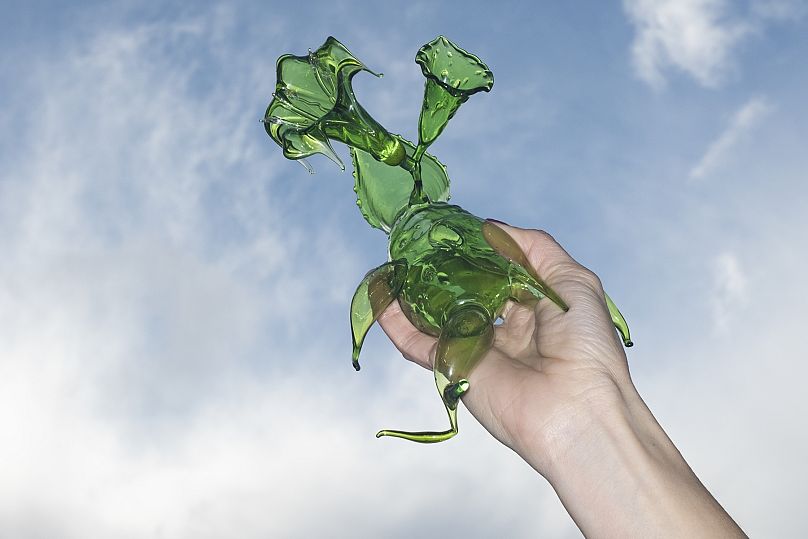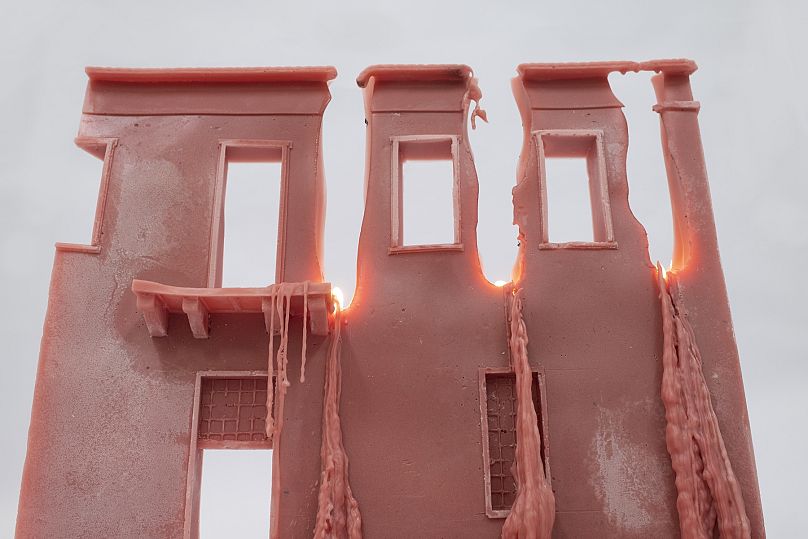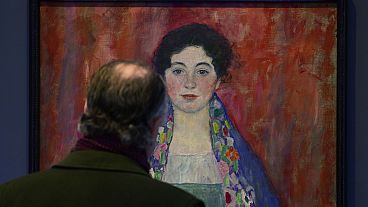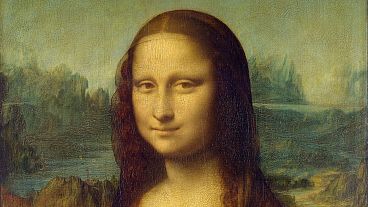Spanning the entirety of 2024, this ambitious project features solo exhibitions, special projects, and large-scale installations by women artists and those who identify as female.
As we celebrate International Women's Day, the National Museum of Contemporary Art in Athens (ΕΜΣΤ) is preparing to unveil several new projects as part of its ongoing exhibition series, 'What If Women Ruled the World?'.
The ambitious programme is taking over the entire museum, dedicating itself to showcasing the works of women artists and those who identify as female throughout 2024.
The title of the initiative is inspired by a work by Yael Bartana of the same name, which has been reconstructed as a large-scale outdoor installation, in Greek and English, on the north and south façades of the museum.
The next instalment of 'What If Women Ruled the World?', which commenced in December last year, opens on 9 March and features solo exhibitions by Lola Flash, Bouchra Khalili, Tala Madani, and Malvina Panagiotidi, alongside special projects by Yael Bartana, Claudia Comte, and Hadassah Emmerich.
Here's a closer look at what you can expect from the different exhibitions:
'What If Women Ruled the World?' by Yael Bartana
Yael Bartana, over the past two decades, has created an artistic practice centred on video and moving images, delving into lesser-known historical events and collective identities. Her installations often reference political speeches and activism, reinterpreting them to critique their impact.
Alongside her audio-visual work, Bartana also creates neon light installations featuring political slogans. One such installation, "What if Women Ruled the World?" (2016), now adorns the front of the museum.
As part of the exhibition, EMST showcases Bartana's video "Two Minutes to Midnight" (2021), based on her 2017 performance. Set in a room reminiscent of Kubrick's "Dr. Strangelove," the piece imagines a female-led council grappling with a nuclear threat scenario. Bartana injects humour into this anti-war narrative while proposing alternative approaches to global crises.
'Salt' by Lola Flash
EMΣΤ is presenting the work of the acclaimed American photographer Lola Flash, whose career spans over four decades at the forefront of queer visual politics.
Flash's art challenges stereotypes and confronts gender, sexual, and racial biases, rooted in their activism with ACT UP during the AIDS epidemic in New York City.
The exhibition features "SALT" (2011–ongoing), a series of portraits capturing iconic women aged over seventy, who continue to make significant contributions to society. These portraits celebrate the wisdom, attractiveness, and power often overlooked due to ageism.
Subjects include Tony Parks, Koho, and Esther Cooper Jackson, photographed in their intimate spaces to convey the texture of their lives.
'The Origin of the Shockwave Ripple Effect' by Claudia Comte
Swiss visual artist Claudia Comte's latest commission for EMΣΤ, "The Origin of the Shockwave Ripple Effect (yellow and turquoise)" (2024), is a stunning 30-metre wall painting bridging the museum's main area and entrance foyer.
Comte's signature blend of traditional techniques and modern technology shines through, reflecting her fascination with organic patterns and forms inspired by nature.
This particular wall painting showcases a striking ripple effect, dynamically flowing from turquoise to yellow, symbolising the vibrancy and interconnectedness of the natural world.
'Epicurean Eden' by Hadassah Emmerich
Residing and working in Brussels, Hadassah Emmerich is celebrated for her vibrant paintings, collages, and murals that blend stylised depictions of exotic fruit, body parts, and vegetal elements into bold, eroticised ornaments.
For her debut exhibition in Greece, Emmerich has created a large-scale, site-specific wall painting spanning the museum's ground floor foyer and mezzanine.
Comprising several murals and a large frieze, the installation invites viewers to engage with themes of attraction, repulsion, and intimacy.
'Αll Dreams are Vexing' by Malvina Panagiotidi
Greek visual artist Malvina Panagiotidi's project "All Dreams Are Vexing," stems from her research on the island of Spetses, where the first Greek female painter, Eleni Boukoura-Altamoura, once lived.
Isolated after the tragic deaths of her children, Boukoura-Altamoura explored spiritualism, leaving behind legends and a magical manuscript.
Panagiotidi exhibition, which displays wax sculptures and blown glass parts, revolves around two main themes: Boukoura-Altamoura's house as a symbol of genius and isolation, and the symbols from her magical manuscript recontextualised as carriers of memory.
